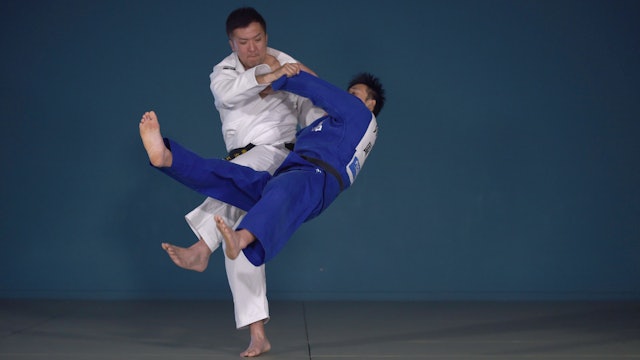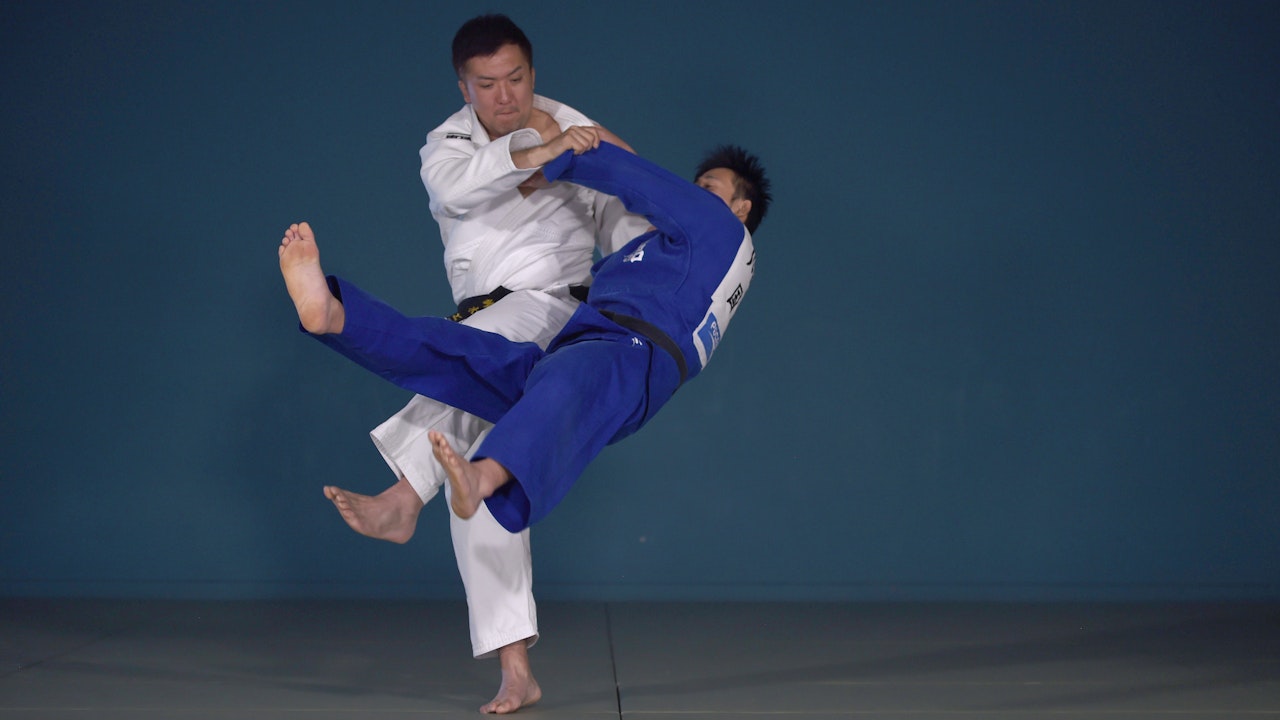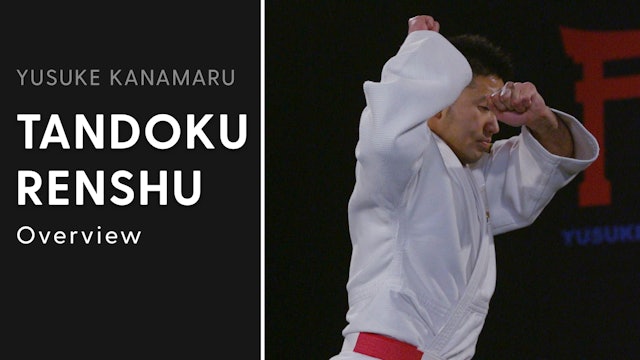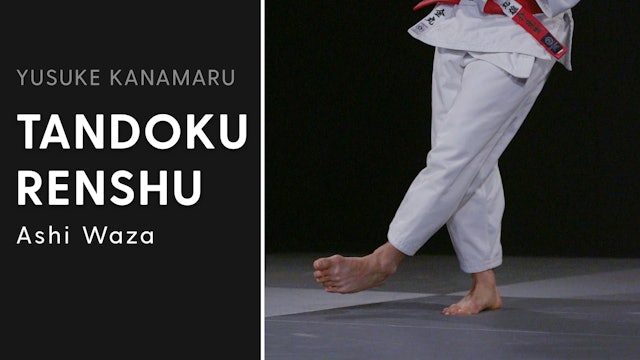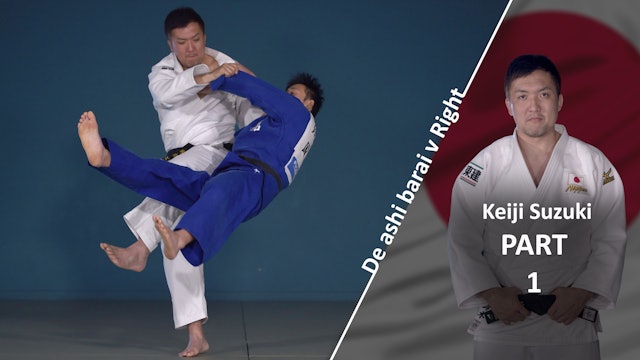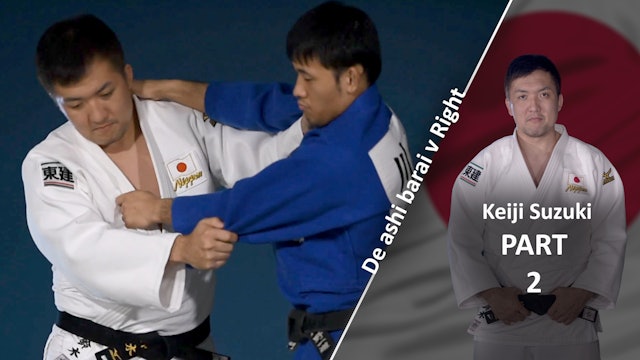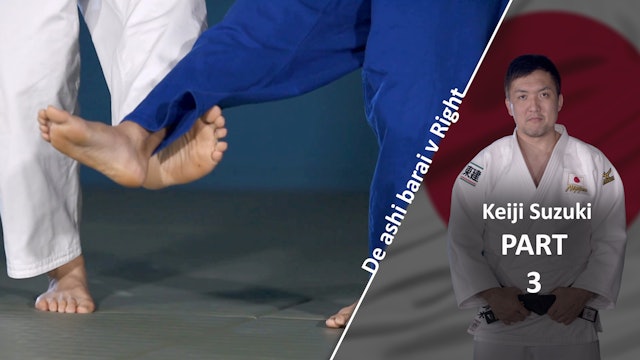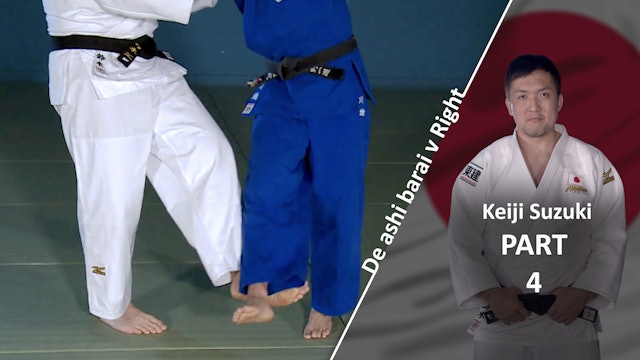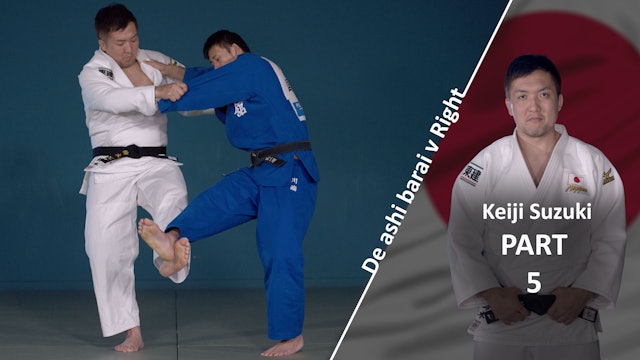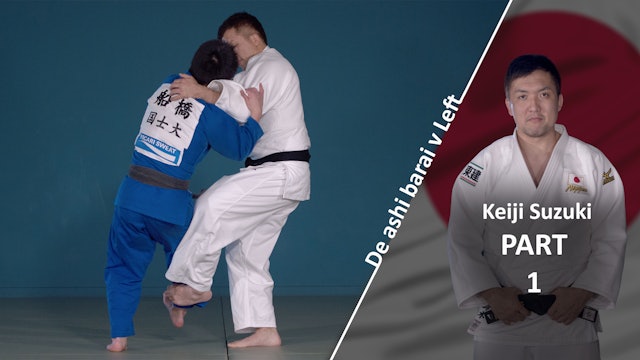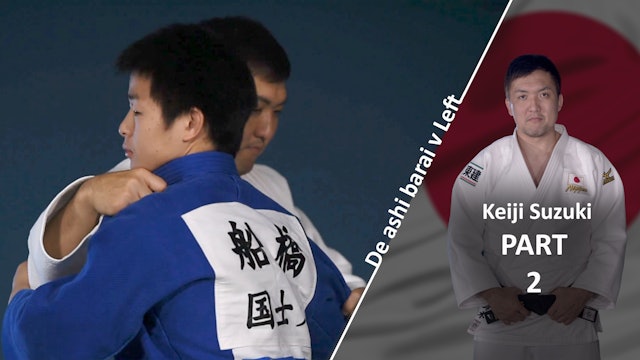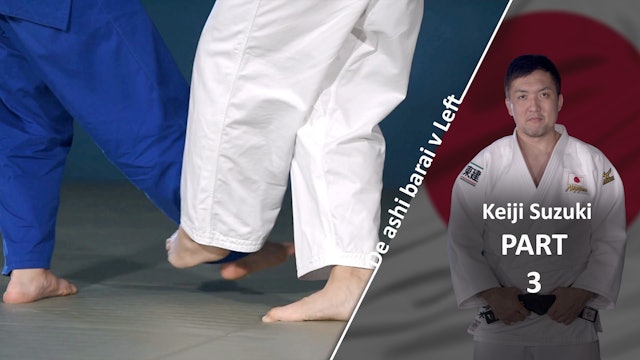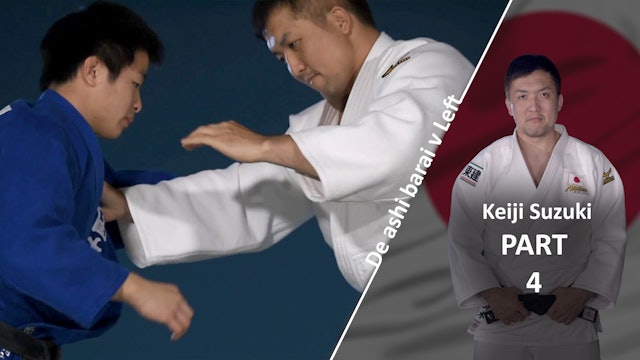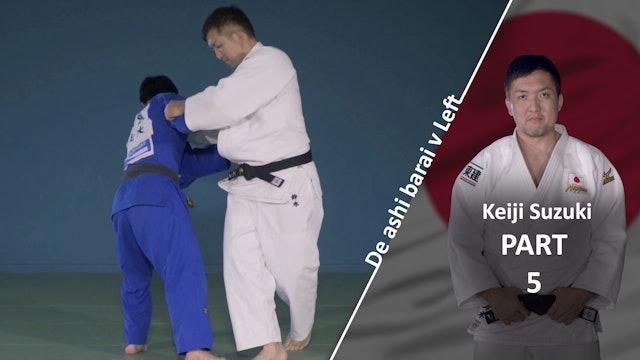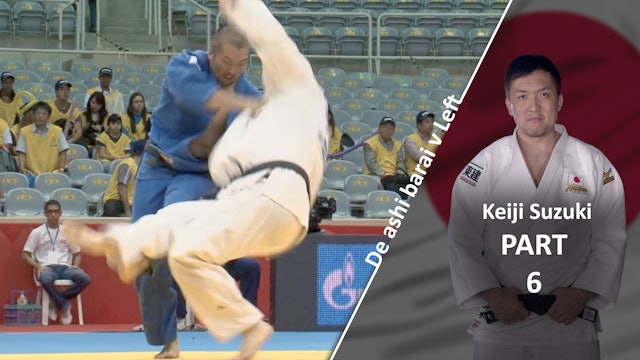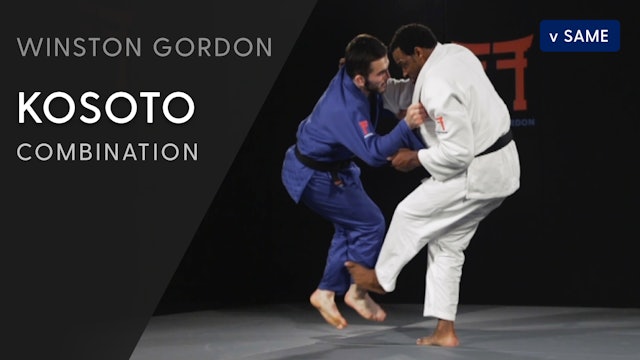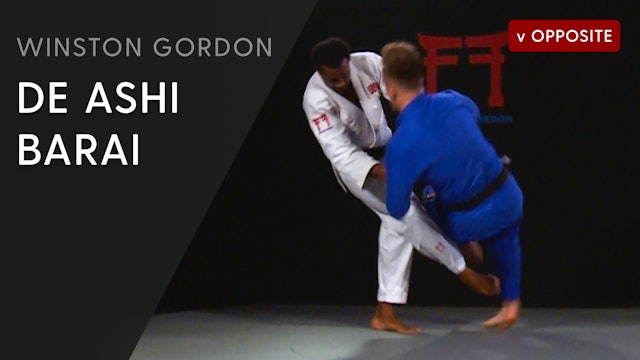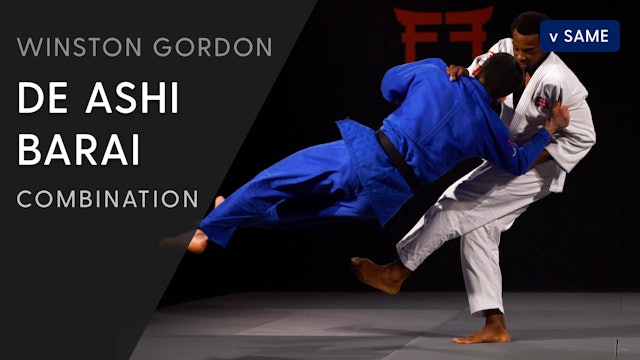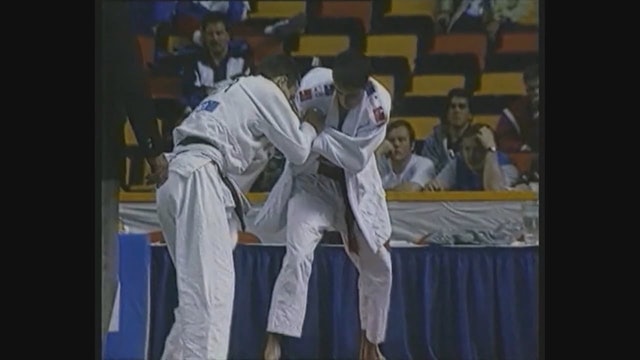De Ashi Barai
8 Seasons
Based on timing and control, De ashi barai is the ultimate foot-sweep.
World renowned Ashi waza expert Keiji Suzuki will teach you everything you need to know about De ashi barai, against both right and left handed opponents, with different variations offered by Winston Gordon, Kosei Inoue, Udo Quellmalz and Neil Adams.
-
Overview | Tandoku Renshu | Yusuke Kanamaru
Episode 1
Tandoku renshu is translated as independent practice. Also known as ‘shadow uchi-komi’, It’s a unique and useful tool to have in your Judo armoury, as you can work alone, without a partner.
Tandoku renshu can be used for warming up, or for coaches to check posture and technique. It is particula... -
Ashi Waza | Tandoku Renshu | Yusuke Kanamaru
Episode 2
The practice of tandoku renshu helps improve timing, an essential component for ashi-waza. As shown here, you must maintain an upright posture and turn the sole of your sweeping foot inwards. This creates the necessary tension in your leg and allows you to comfortably catch the foot you’re attack...
-
Overview VS Right | De Ashi Barai | Keiji Suzuki
Episode 3
Double World and Olympic Champion Keiji Suzuki introduces his De ashi barai against right handed opponents.
-
Upper Body VS Right | De Ashi Barai | Keiji Suzuki
Episode 4
Double World and Olympic Champion Keiji Suzuki reveals the grips and upper body movement for his De ashi barai against right handed opponents.
-
Lower Body VS Right | De Ashi Barai | Keiji Suzuki
Episode 5
Double World and Olympic Champion Keiji Suzuki reveals the leg movement and foot placement for his De ashi barai against right handed opponents.
-
Breaking Balance VS Right | De Ashi Barai | Keiji Suzuki
Episode 6
Double World and Olympic Champion Keiji Suzuki reveals the breaking of balance and how he trains his De ashi barai against right handed opponents.
-
Execution and Competition Examples | De Ashi Barai | Keiji Suzuki
Episode 7
Double World and Olympic Champion Keiji Suzuki reveals the execution to his De ashi barai against right handed opponents and how he used the technique in competition.
-
Overview VS Left | De Ashi Barai | Keiji Suzuki
Episode 8
Double World and Olympic Champion Keiji Suzuki introduces his De ashi barai against left handed opponents.
-
Upper Body VS Left | De Ashi Barai | Keiji Suzuki
Episode 9
Double World and Olympic Champion Keiji Suzuki reveals the grips and upper body movement for his De ashi barai against left handed opponents.
-
Lower Body VS Left | De Ashi Barai | Keiji Suzuki
Episode 10
Double World and Olympic Champion Keiji Suzuki reveals the leg movement and foot placement for his De ashi barai against left handed opponents.
-
Left Hand Free VS Left | De Ashi Barai | Keiji Suzuki
Episode 11
Double World and Olympic Champion Keiji Suzuki shows how he keeps his hand free when throwing with De ashi barai against left handed opponents.
-
Breaking Balance VS Left | De Ashi Barai | Keiji Suzuki
Episode 12
Double World and Olympic Champion Keiji Suzuki shows how to break balance when throwing with De ashi barai against left handed opponents.
-
Competition Variations VS Left | De Ashi Barai | Keiji Suzuki
Episode 13
A chance to see how double World and Olympic Champion Keiji Suzuki used his De ashi barai against left handed opponents in competition.
-
 01:13Episode 14
01:13Episode 14Overview | Combinations | Suzuki
Episode 14
Suzuki found that bigger, stronger opponents would try and dominate his head and pull him in. He had to find ways to unsettle them – De Ashi Barai, and this combination was his answer.
Fearful of this attack, it worked as a great deterrent to his opponent ’s, who would be reluctant to pull hi...
-
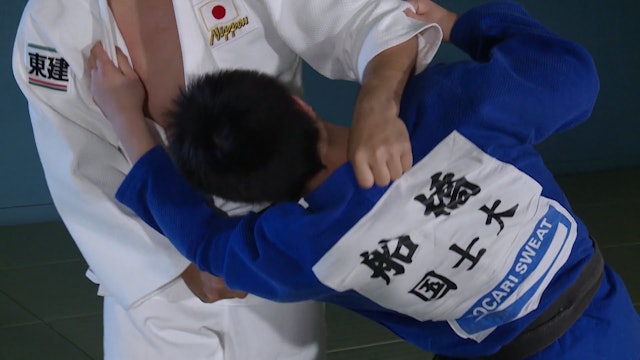 02:29Episode 15
02:29Episode 15Upper Body | Combinations | Suzuki
Episode 15
There are two clear upper body movements for this combination, and they are both lead by the collar hand.
First, Suzuki pulls their upper body down and to the left, and then he changes direction, rotating Uke with both arms in a steering wheel type motion.
-
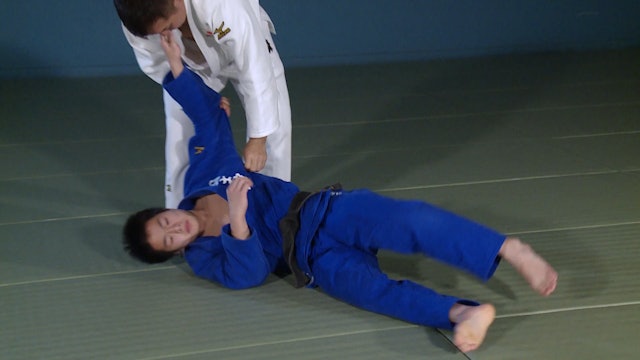 01:54Episode 16
01:54Episode 16Lower Body | Combinations | Suzuki
Episode 16
The lower body has two clear directions. The Kouchi comes first; it’s a big kicking action, but Suzuki places his power and weight onto his supporting leg, giving his left leg a light feeling to it.
Next, he places his left leg down and before Uke can adjust catches their outstretched leg with...
-
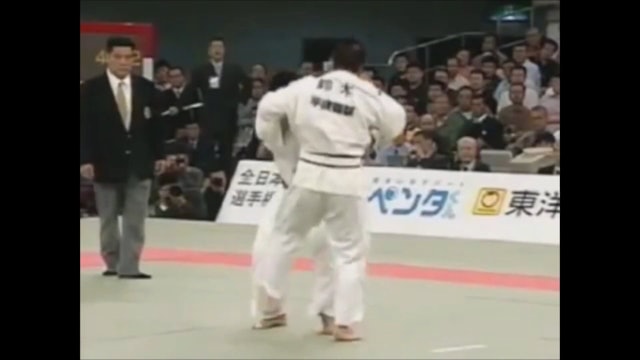 02:26Episode 17
02:26Episode 17Sasae, Kouchi, De Ashi combination | Suzuki
Episode 17
The Sasae into the Kouchi requires a quick bit of footwork as you are attacking with the same leg twice. He does a sort of ‘hop step’, first placing his right foot down then immediately switching back to his left.
He does it all from the left collar and sleeve grip that he uses for both Kouchi...
-
Kosoto gari - De ashi barai combination | Winston Gordon
Episode 18
Gordon shows his De ashi barai from Kosoto gari combination from an extreme right v right situation.
-
De ashi barai from lapel break | Winston Gordon
Episode 19
Gordon shows his De ashi barai from lapel grip break with a R v L situation.
-
Sasae - De ashi barai combination | Winston Gordon
Episode 20
Winston Gordon shows his De ashi barai from Sasae tsurikomi ashi.
-
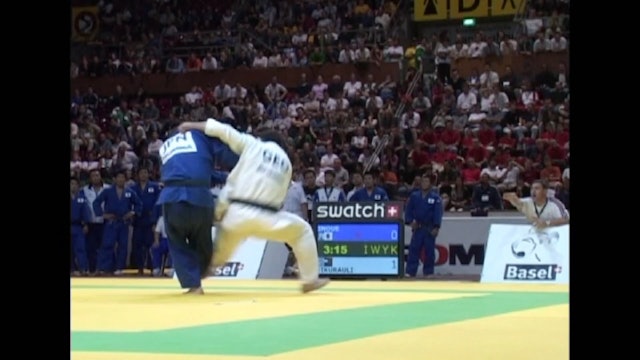 06:08Episode 21
06:08Episode 21Kosei Inoue - Ashi waza
Episode 21
Inoue demonstrates all three variations of his Ashi waza - Kosoto gari, De ashi barai and Okuri ashi barai
-
Udo Quellmalz - De ashi barai - left v right
Episode 22
Quellmalz demonstrates De ashi barai against a left handed opponent
-
Udo Quellmalz - De ashi barai - left v extreme right
Episode 23
Quellmalz demonstrates De ashi barai against an extreme right opponent
-
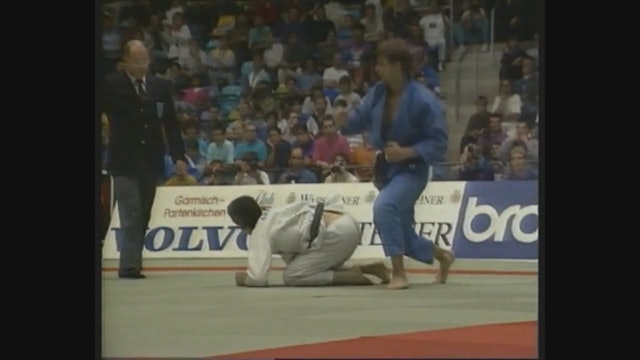 01:55Episode 24
01:55Episode 24Udo Quellmalz - De ashi barai - left v left
Episode 24
Quellmalz demonstrates De ashi barai against a left handed opponent

